Price Check Q3 2016: DRAM Prices Down Over 20% Since Early 2016
by Anton Shilov on July 25, 2016 12:01 AM ESTHigh-Speed DDR4 Pricing
Coming up next are higher-speed DDR4 modules. In fact, the difference between prices of DDR4-2133/2400 devices and DDR4-3000 modules is relatively small. The latter retail for around $65 to $80 while delivering considerably higher official rated performance than the officially supported frequencies by today’s processors (meaning modules with 2133 and 2400 MT/s data rates).
G.Skill's Ripjaws V DDR4-3000/CL15 2x8 GB (F4-3000C15D-16GVGB) Kit
For example, G.Skill's Ripjaws V DDR4-3000/CL15 2x8 GB kit (F4-3000C15D-16GVGB) costs $61.99 at Newegg and $72.79 at Amazon.
Patriot’s Viper 4 DDR4-3000/CL16 2x8 GB (PV416G300C6K) Kit
Meanwhile, Patriot’s Viper 4 DDR4-3000/CL16 16 GB (2x8 GB) kit (PV416G300C6K) can be purchased for $79.99 at Amazon, down from over $100 several months ago (but up from $63.99 in June). DDR4-3000 kits from companies like Crucial, Corsair, Kingston cost about the same, or they are only slightly pricier. Nonetheless, they are all lower than the prices six months ago.
G.Skill’s Ripjaws V DDR4-3200/CL16 16 GB (2×8 GB) Kits
Starting at DDR4-3200, memory sticks for overclockers get somewhat more expensive: the most affordable models retail for $75 to $90. This happens because not all DRAM chips can operate at such data rates. Still, if you want extra frequency without major overprices, DDR4 kits rated for 3200 MT/s are products to consider. Moreover, prices of such products decline pretty fast as well, as shown by G.Skill’s Ripjaws V DDR4-3200/CL16 16 GB (2×8 GB) kits (F4-3200C16D-16GVK and F4-3200C16D-16GVGB) These used to cost $120 in January, but which can now be purchased starting at $75.95 from a partner of Amazon or for $71.99 from Newegg.
G.Skill's Ripjaws V DDR4-3600/CL17 2×8 GB Kit (F4-3600C17D-16GVK)
Memory modules rated to run at 3600 MT/s cost nearly two times more than the most affordable DDR4-3000 devices: they are priced starting from $115 to $135 at Amazon and Newegg. Nonetheless, market trends fully affect prices of such modules as well: the G.Skill Ripjaws V DDR4-3600/CL17 16 GB (2×8 GB) kit (F4-3600C17D-16GVK) retailed for $275.99 in early 2016, but right now the kit is available for $126.50 at Amazon and for $115 from Newegg.
Corsair's Vengeance LPX and G.Skill's Trident Z at DDR4-4000+
DRAM modules capable of running at 4000 MT/s and higher are available only from two vendors, and they are intended mostly for hardcore enthusiasts as well as those that want to conduct extreme overclocking experiments. Prices of such modules remain very high regardless of market trends because very few DRAM ICs can operate at such frequencies - it subsequently takes module manufacturers a lot of time to cherry pick the right chips to build such modules. So far, only G.Skill has introduced a 16 GB (2×8 GB) dual-channel DDR4-4133/CL19 kit, the TridentZ F4-4133C19D-16GTZA. This product is currently available for $370 from an Amazon partner and for $220 at Newegg. It is noteworthy that retailers started to sell this kit very recently and we do not have any data regarding its price fluctuations yet.
When it comes to blazing-fast 8 GB (2×4 GB) dual-channel DDR4-4266/CL19 memory kits, there are two options available today:
G.Skill’s TridentZ F4-4266C19D-8GTZ for $338 at Amazon and for $280 at Newegg
Corsair’s Vengeance LPX CMK8GX4M2B4266C19(R) for $322.44 at Amazon and for $285 at Newegg.
These kits have gotten a fair bit cheaper recently, yet they are still very expensive.
Now, let’s take a look at larger kits designed for HEDT systems. Due to the intrinsic nature of the quad-channel memory controllers inside Core i7 Extreme Haswell-E and Broadwell-E processors, HEDT kits do not boast with extremely high frequencies. This is because it is harder to qualify four modules at high


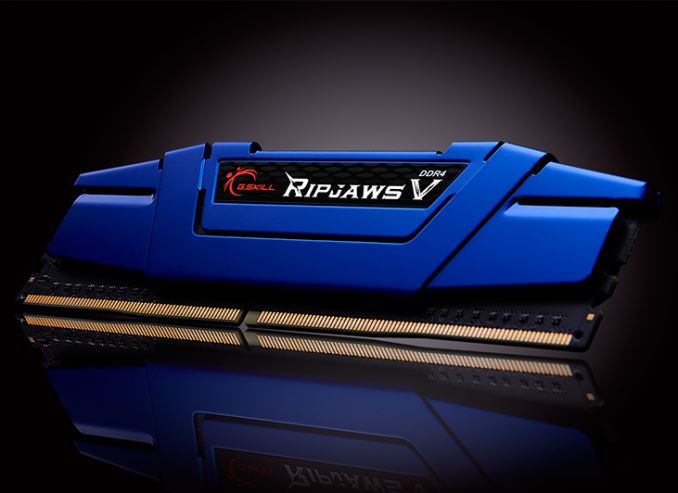
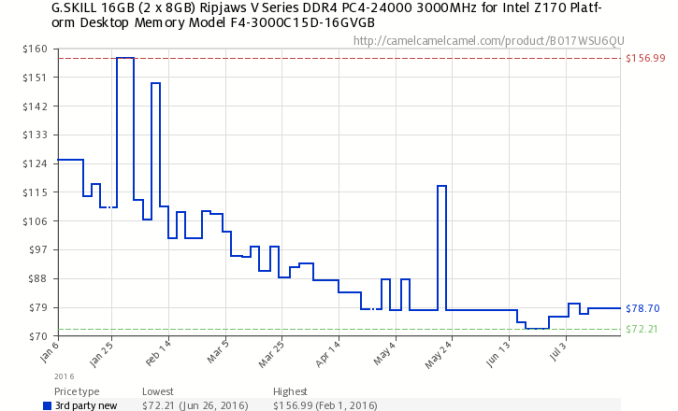
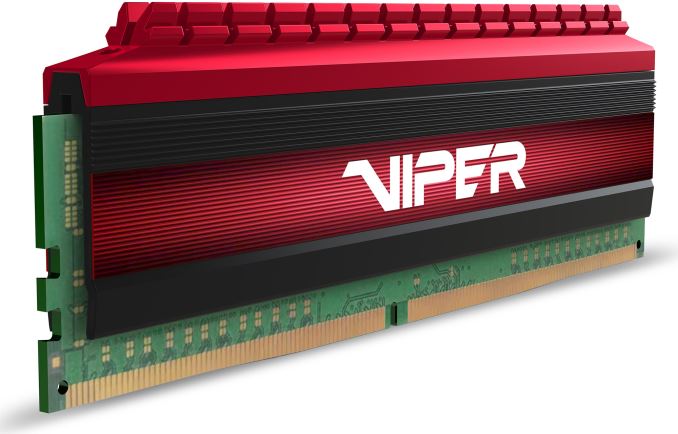
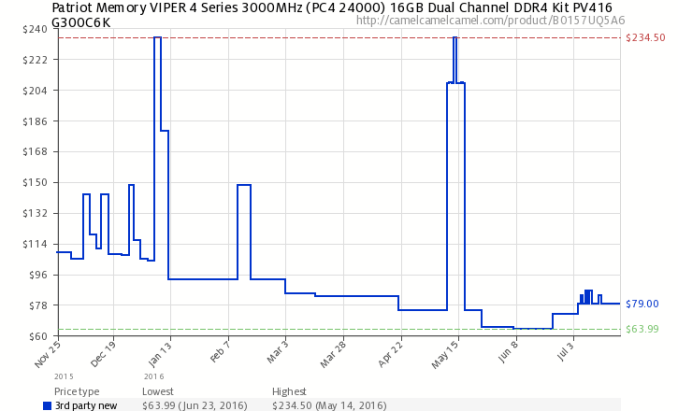
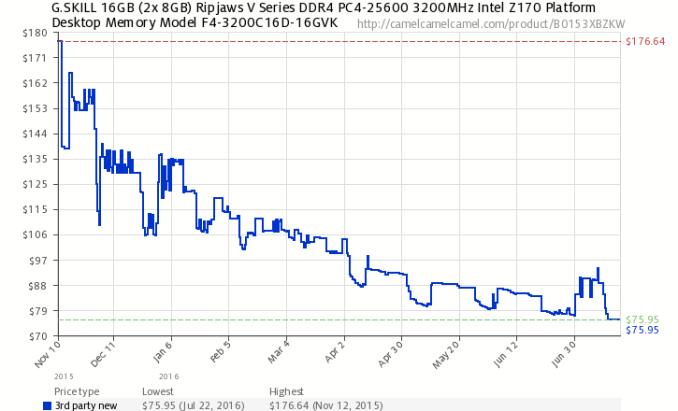

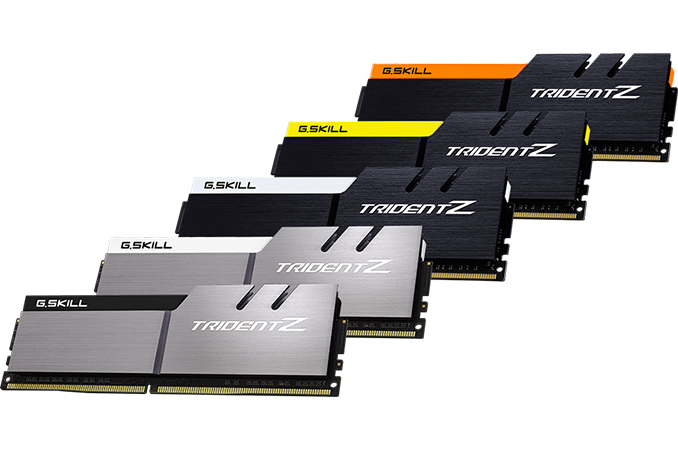









37 Comments
View All Comments
invasmani - Monday, July 25, 2016 - link
The majority of American's that actively live in the northern states most impacted by the Keystone pipeline deal were in favor of it. It's the fault of Obama and democrats who tried to make it into a big environmental issue despite the fact that a pipeline is much safer than railroad transport.catboy - Tuesday, July 26, 2016 - link
tipoo is correct. Corporations scam Canadians with outrageously unfair prices just because they can. Here is a news report about that fact:http://www.cbc.ca/news/canada/country-pricing-a-ca...
Of course, that report is not about hardware, but Canadians get price gouged on hardware in the same way as they do on all other products.
I recommend for Canadians to stop buying products from Canadian sellers whenever possible. If enough Canadians do that, then corporations will end the practice of price gouging Canadians.
doggface - Tuesday, July 26, 2016 - link
Same thing happens in Australia. $160 in USD = $350-$400 in AUD.The manufacturers price items much lower in the US to get the buzz from websites like these. Then mark it up in lower volume countries.
Another example. $US600 for GTX1080 = $AUD1150
Sure. Our dollar is lower. But it doesnt account for the massive discrepency. We call it the Australia tax
Arnulf - Monday, July 25, 2016 - link
I find it intriguing that Samsung has been producing complex circuits on 14 nm node for some time now yet they are only switching to 18 nm for DRAM production (which should be more dense).DanNeely - Monday, July 25, 2016 - link
Somewhere around half a DRAM die is made up of analog components used to terminate signals on the database; and unlike the digital circuits in the ram cells themselves analog components scale minimally with process shrinks. As a result DRAM gets less of a benefit from process improvements than things like CPUs/GPUs/Flash that are almost all digital components on the die. The analog penalty has gotten worse with each new generation of DDR because to keep the data bus stable at higher frequencies the termination components need to be moved closer to the DRAM; leading to a steady migration of them from the mobo to the dimm to the dram chips themselves.p1esk - Monday, July 25, 2016 - link
Source? Everything is analog of the circuit level.DanNeely - Monday, July 25, 2016 - link
It was something I read back when the DDR4 spec was first released so I'm having trouble finding it (will look more later); but analog components are things that aren't transistors eg resistors, capacitors, inductors (also power transistors which need to be a certain size to carry the amount of current that they do or a lot of RF components; but neither of them are a factor here). Physical size is a major component in how they perform. ex Make a capacitor half as large and all other things equal it's capacitance is only half as great.It's one of the factors behind why the minimum size dimm goes up every time there's a new process. The lower capacity dram chips see the least shrinkage because the largest fraction of their die is signal termination components that don't shrink much.
yuhong - Tuesday, July 26, 2016 - link
I guess that is why they often eventually drop things like x4 configurations when moving older DRAM like 1Gbit DDR2 to newer processes.jardows2 - Monday, July 25, 2016 - link
I built my current computer in 2102, and purchased 8 (2x4) gigs of DDR3-1600 RAM. Thinking I could eventually upgrade to 16 gigs if needed, but then memory prices shot up. I can finally purchase the same RAM I did 4 years ago at a slightly lower price, instead of a significantly higher (at times was double what I paid) price!bananaforscale - Monday, July 25, 2016 - link
I built mine in late 2011 and bought 4x4 GB of DDR3-1600. Decided to upgrade the memory past winter, the price per GB was still about the same for the DIMMs I used, but doubling the amount and buying faster memory wasn't that much more expensive -> went from 16 GB 1600 to 32 GB 2133 (except the CPU only supports 1866 but whatevs) and distributed the old memory among less important hardware.